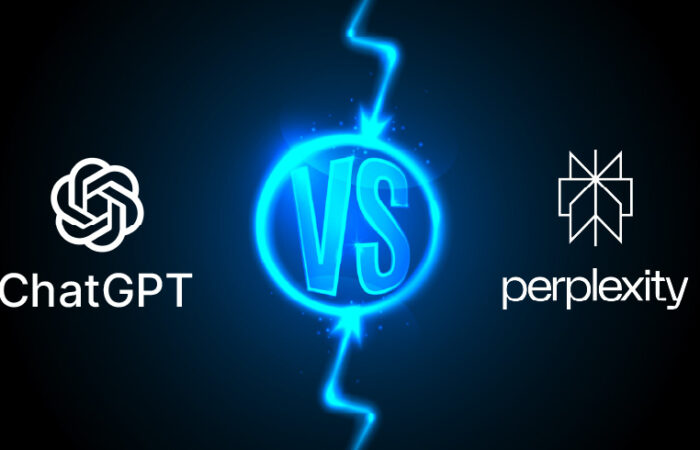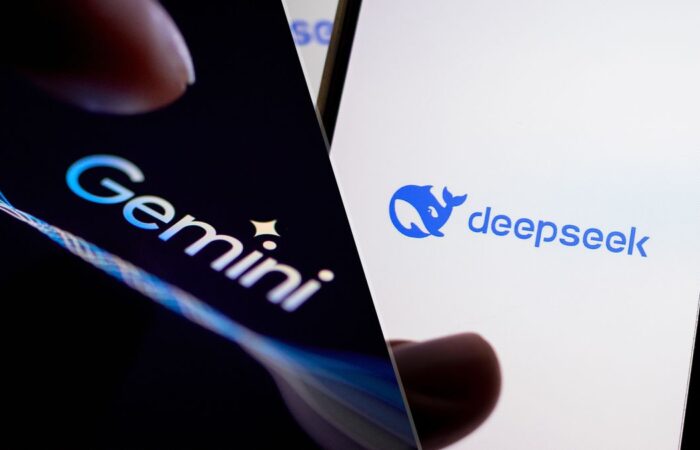
The current landscape of enterprise adoption of Artificial Intelligence (AI) reflects a significant shift towards more definitive integration into business operations.
Recent surveys indicate that 77% of companies are either using or exploring AI, with 83% considering it a top priority in their strategic plans. This marks a substantial increase from previous years, showcasing a growing recognition of AI’s potential to enhance competitive advantage.
According to Andressen Horowitz’s survey, budgets for generative AI have been skyrocketing, where enterprises are looking to spend 2 to 5 times of last year’s budget to support more genAI experimentation. Although there are still some reservations left, and understandably so, enterprise leaders are expanding on the number of use cases that are shifting from the experimentation stage to be deployed on a smaller production scale.
In this article, we deep dive into the three most popular LLM frameworks that have generated notable traction in supporting businesses developing their GenAI Apps with a case study.
Langchain vs. LlamaIndex vs. deepset
LangChain, LlamaIndex and deepset offer distinct solutions tailored for different enterprise needs. These are known as LLMOps tools that help companies to streamline their app development process.
Below is a comprehensive comparison of these three frameworks based on key features and capabilities, customization options, and respective case study.
LangChain
Launched in October 2022 as an open-source project, Langchain quickly became one of the most popular with hundreds of Github users contributing improvements and establishing a vibrant community with user-generated tutorials and meetups. Within the last 20 months, Langchain has gone on to raise $35 millions in two rounds from investors such as Sequoia Capital and Benchmark.
LlamaIndex
Released in November 2022 as an open-source project, LlamaIndex is an open-source data framework for connecting custom datasets with large language models (LLMs), aiming to simplify the building of knowledge-intensive LLM applications. LlamaIndex has only raised 1 round of $8.5 million from investors such as Greylock, and Dropbox Ventures as of June 2023.
Deepset (Haystack)
Established in June 2018 in Germany, deepset is an enterprise software vendor that provides developers with the tools to build production-ready natural language processing (NLP) systems. Its most well-known offering is Haystack, an open-source Python framework for building custom applications with large language models. deepset has since raised $45.6 million over three rounds from investors such as Google Ventures and Balderton Capital.
A Comparison of Key Features and Capabilities
Langchain
- Modular Architecture: LangChain offers a modular and composable framework that allows developers to build sophisticated applications by combining different components such as language models, data sources, and processing steps. This modularity promotes code reusability and rapid prototyping.
- Integration with LLMs: LangChain serves as a bridge between LLMs and real-world applications, providing a unified interface that abstracts the complexities of interacting with different models. It supports multiple LLMs from various providers, such as OpenAI and Hugging Face.
- Applications and Use Cases: LangChain is used for a wide range of applications, including chatbots, intelligent search, question-answering systems, text summarization, and more. Its flexibility allows it to be applied in various industries, from healthcare to marketing.
- Tools and Components: The framework includes various tools such as LangGraph for building stateful applications, LangServe for deploying applications as APIs, and LangSmith for monitoring and debugging LLM applications. It also features components like prompt templates, retrievers, and output parsers to enhance language processing tasks
LlamaIndex
- Data Integration: LlamaIndex offers a wide range of data connectors through its LlamaHub, allowing seamless ingestion of data from various sources such as APIs, databases, PDFs, and more. This integration helps in creating context-rich applications by bridging external data with LLMs.
- Indexing and Retrieval: The framework supports multiple indexing methods, including vector, tree, list, and keyword indexes, to organize and retrieve data efficiently. These indexes facilitate the retrieval of relevant information based on user queries, enhancing the performance of Retrieval-Augmented Generation (RAG) systems.
- Query Interfaces: LlamaIndex provides advanced query interfaces that enable natural language interactions with data. This feature is crucial for applications like chatbots, question-answering systems, and structured data extraction, allowing users to query data in a conversational manner.
- Multi-Modal Support: The framework can handle multi-modal documents, enabling the processing of various data types such as images and text. This capability broadens the application scope of LlamaIndex, making it suitable for complex data environments.
- Customization and Flexibility: LlamaIndex allows developers to customize components such as prompt templates, embedding models, and query engines. This flexibility makes it adaptable to specific use cases and enhances its integration with other frameworks like LangChain and OpenAI’s API.
Deepset
- Haystack: Haystack allows developers to create custom pipelines for tasks such as document retrieval, semantic search, text generation, and question answering. It integrates with various platforms like Hugging Face Transformers, Elasticsearch, and OpenAI, among others.
- deepset Cloud: This is a commercial SaaS platform that provides a managed version of Haystack. It supports the entire lifecycle of NLP application development, from prototyping to deployment and monitoring. Deepset Cloud is designed to be user-friendly, even for those not deeply versed in NLP, and includes features like automatic scaling and monitoring to facilitate the development of enterprise-grade applications.
- Enterprise Focus: deepset targets enterprise customers, providing tools that are compliant with industry standards like SOC 2 and GDPR. Its platforms are designed to handle large-scale NLP applications that require robust infrastructure and security features.
- Applications and Use Cases: deepset’s technology is applied across various industries, including finance, healthcare, and legal sectors. It supports applications such as chatbots, semantic search engines, and AI systems for critical environments like aviation
A Comparison of Customization Options & Case Study
Langchain
- Flexibility and Modularity: LangChain is designed with a high degree of flexibility, allowing developers to create highly tailored applications. Its modular architecture enables users to customize various components, such as chains, prompts, and models, to fit specific needs.
- Custom Chains and Components: Users can create custom chains using the LangChain Expression Language (LCEL), which allows for advanced configurations like parallel execution, fallbacks, and asynchronous methods. This capability makes it suitable for complex workflows.
- Integration with Data Sources: LangChain supports integration with a wide range of data sources and APIs, enabling developers to fine-tune LLM behavior and connect to custom datasets seamlessly.
- Customization of LLM Behavior: Developers can modify the behavior of language models extensively, including adjusting prompts and processing logic, which allows for a more tailored user experience.
Case Study: Ayden
Adyen, a financial technology platform, faced challenges as global commerce accelerated, resulting in increased transaction volumes and pressure on their support teams. To address this, Adyen sought technological solutions to scale operations without expanding team size. They assembled a team of data scientists and machine learning engineers at their new Tech Hub in Madrid to enhance support team efficiency and satisfaction.
The solution involved implementing two key applications using LangChain: (1) a smart ticket routing system and (2) a support agent copilot. The smart ticket routing system aimed to direct tickets to the appropriate support personnel quickly, based on content analysis. The support agent copilot provided agents with suggested responses, improving the speed and accuracy of ticket handling. LangChain’s framework allowed Adyen to experiment with different models without being locked into a single one, ensuring flexibility and customization.
Results: Adyen achieved more efficient and accurate ticket routing, enabling merchants to receive support from the most suitable technical experts promptly. Within four months, they developed a comprehensive document database for effective information retrieval, significantly outperforming traditional search methods. This led to quicker support response times and increased satisfaction among support agents, validating the new system’s effectiveness
LlamaIndex
- Lower-Level APIs for Advanced Users: LlamaIndex provides lower-level APIs that allow advanced users to customize and extend various modules, including data connectors, indices, and query engines. This flexibility is beneficial for developers looking to build more complex applications.
- Swappable Storage Layer: LlamaIndex allows users to customize the storage layer where ingested documents and metadata are stored. This feature enables enterprises to choose their preferred data management solutions.
- Ease of Use for Beginners: For less experienced users, LlamaIndex offers high-level APIs that simplify the process of data ingestion and querying, making it easy to get started without extensive customization.
- Focus on Indexing and Retrieval: While LlamaIndex supports customization, its primary focus is on efficient data indexing and retrieval, which may limit the extent of application-level customization compared to LangChain.
Case Study: Scaleport AI
Scaleport AI, a company specializing in AI technology for industries like Legal, eCommerce, Real Estate, and Finance, faced significant challenges in their development processes. These included lengthy development timelines for technical prototypes, difficulties in demonstrating value to clients, complex data ingestion setups, and inadequate OCR performance. These obstacles hindered their ability to efficiently deliver AI solutions and engage clients effectively.
To overcome these issues, Scaleport AI adopted LlamaCloud, a comprehensive AI development platform. LlamaCloud provided a centralized knowledge interface that streamlined data management and reduced time spent on data wrangling. The platform’s LlamaParse tool significantly improved OCR accuracy and efficiency. Additionally, LlamaCloud’s advanced indexing and retrieval capabilities facilitated flexible integration with various data sources, enhancing data accessibility. The platform also offered rapid prototyping and seamless transitions from UI to code, expediting the development process.
Results: LlamaCloud led to accelerated development timelines, allowing Scaleport AI to create technical prototypes quickly and demonstrate tangible value to clients, improving sales outcomes. The enhanced OCR performance and flexible data handling capabilities resulted in high-quality results delivered more efficiently.
Overall, LlamaCloud proved to be a game-changer, reducing development hours by 50-60% and significantly boosting Scaleport AI’s operational efficiency and client engagement.
deepset
- Customizable Search and Retrieval: deepset provides tools that allow enterprises to customize their search and retrieval processes. Users can adapt the underlying models and pipelines to suit specific domain requirements.
- Integration with Existing Systems: The platform allows for integration with existing data systems, enabling users to customize how data is ingested and queried.
- Limited Fine-Grained Control: While deepset offers customization options, it may not provide the same level of fine-grained control over LLM behavior as LangChain, focusing more on enhancing search capabilities rather than extensive application customization.
Case Study: Airbus
Airbus faced the challenge of efficiently retrieving information from their extensive Flight Crew Operating Manual (FCOM), which is crucial for pilots during training and in-flight operations. The manual, spanning thousands of pages, includes both text and tables, making it difficult for pilots to quickly find necessary information using the existing keyword-based search system. This system required pilots to know the exact terms used in the manual, which could delay finding solutions in critical situations.
To address this, Airbus collaborated with deepset to implement a sophisticated question answering (QA) system using the Haystack framework. This system integrates both text and table QA capabilities, leveraging models like Google’s TaPas for table data. The solution employs a dual retriever-reader pipeline, processing queries through both text and table QA models and combining the results based on confidence levels. This setup allows the system to efficiently handle complex queries and provide precise answers, regardless of whether the information is in text or table form.
Results: The system significantly improved the speed and accuracy of information retrieval. Although still experimental for life-critical scenarios, the system has shown potential for broader applications in engineering and pilot training, demonstrating the value of advanced NLP technologies in technical domains.
Conclusion
It is clear that each of these frameworks has their strengths and weaknesses. Below is a comparison table summarizing the differences between key features and capabiilities between the three frameworks:

Comparable guide of LLM framework: Langchain, Llamaindex and deepset
LangChain is designed for building applications that require complex language model interactions. It excels in dialogue generation, content creation, and orchestrating multiple LLMs to perform specific tasks. It is ideal for applications needing dynamic conversation capabilities or complex workflows involving multiple LLMs. On that note, LangChain might be more suited for projects that require flexibility in handling various LLM interactions and generating complex outputs.
On the other hand, LlamaIndex focuses on efficient data indexing and retrieval, making it suitable for applications that require fast and accurate data access. It is best for projects where quick access to large datasets is critical, such as search engines or data-heavy applications. While LlamaIndex is optimized for scenarios where data retrieval speed and accuracy are paramount, it may not offer the same level of NLP capabilities as LangChain.
Finally,Haystack is a robust framework for building search systems and QA applications. It supports various NLP tasks, including document retrieval and question answering, with a strong focus on integrating with existing data systems. It is most suitable for enterprises looking to implement advanced search capabilities or QA systems that integrate seamlessly with their existing data infrastructure. Haystack is particularly beneficial for organizations needing comprehensive search and QA solutions, leveraging its ability to handle complex queries and integrate with diverse data sources.
Your choice of LLM frameworks should always depend on your specific needs: LangChain for complex language interactions, LlamaIndex for efficient data retrieval, and deepset for advanced search and QA capabilities.
Subscribe To Get Update Latest Blog Post





Leave Your Comment: